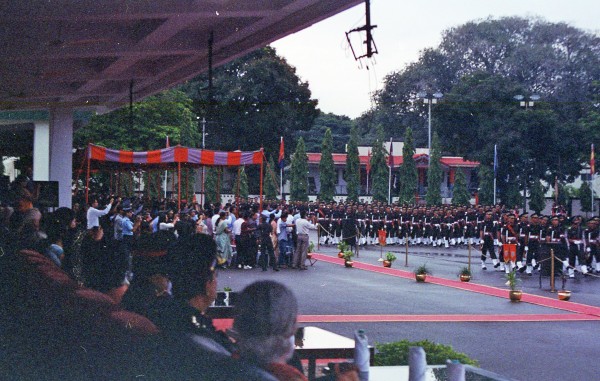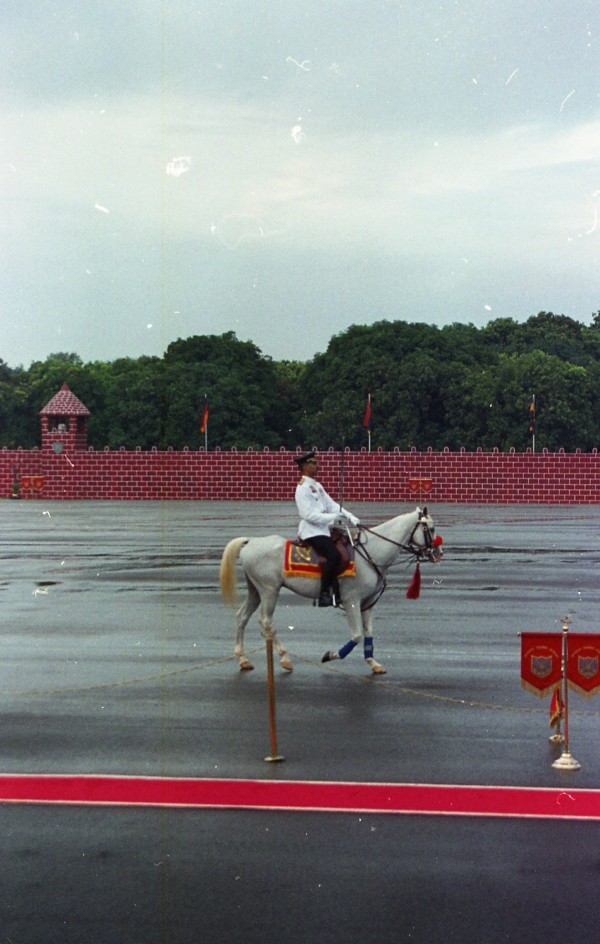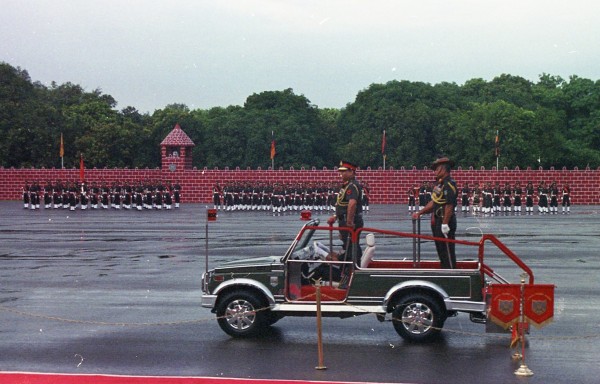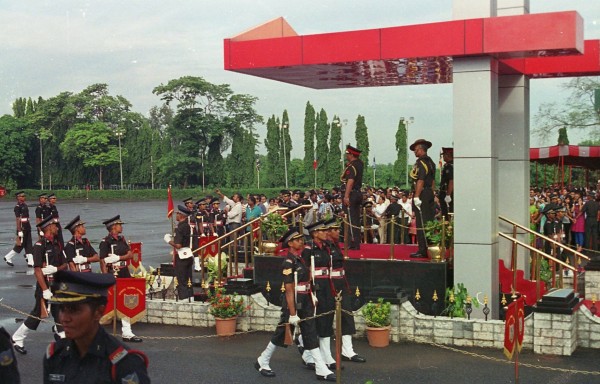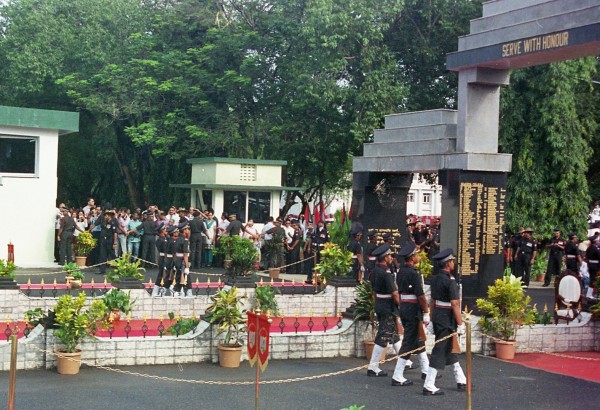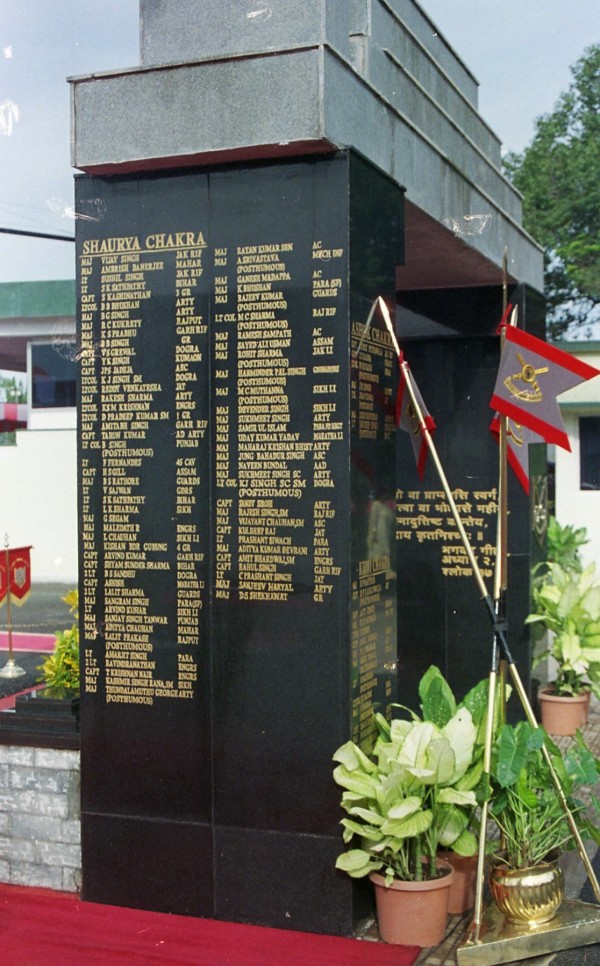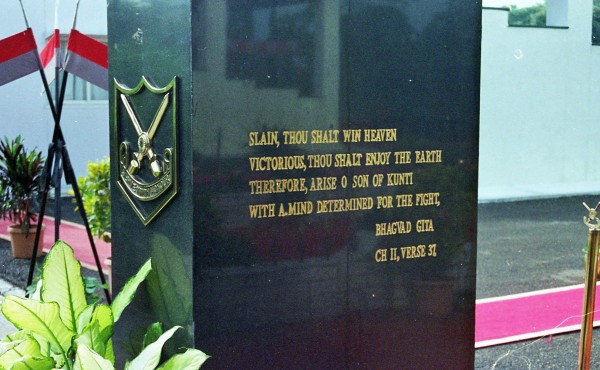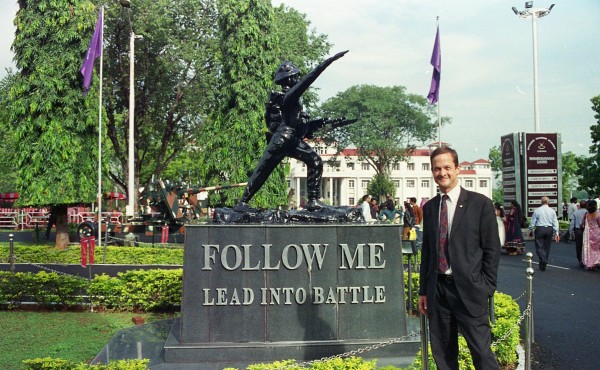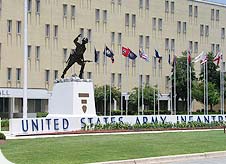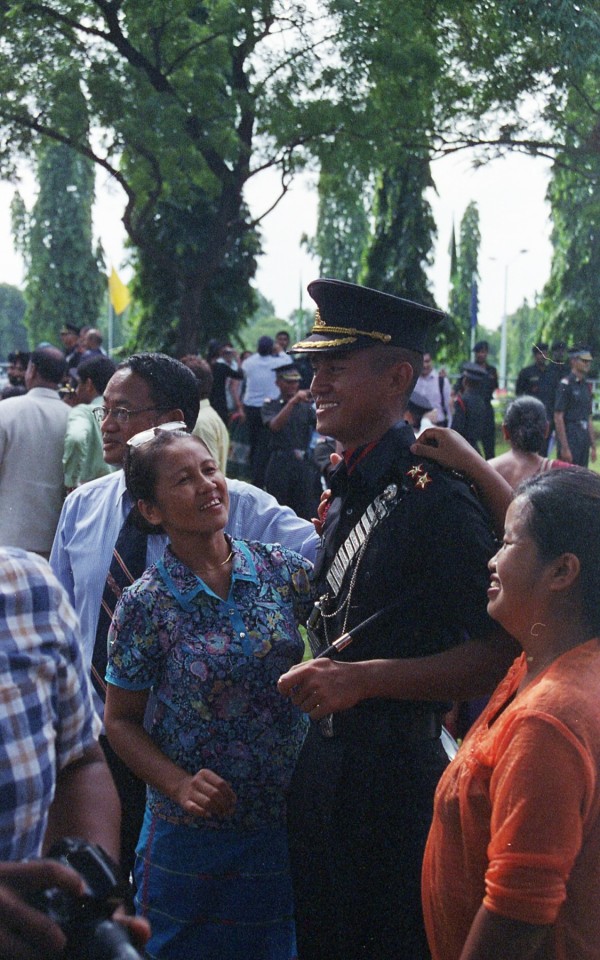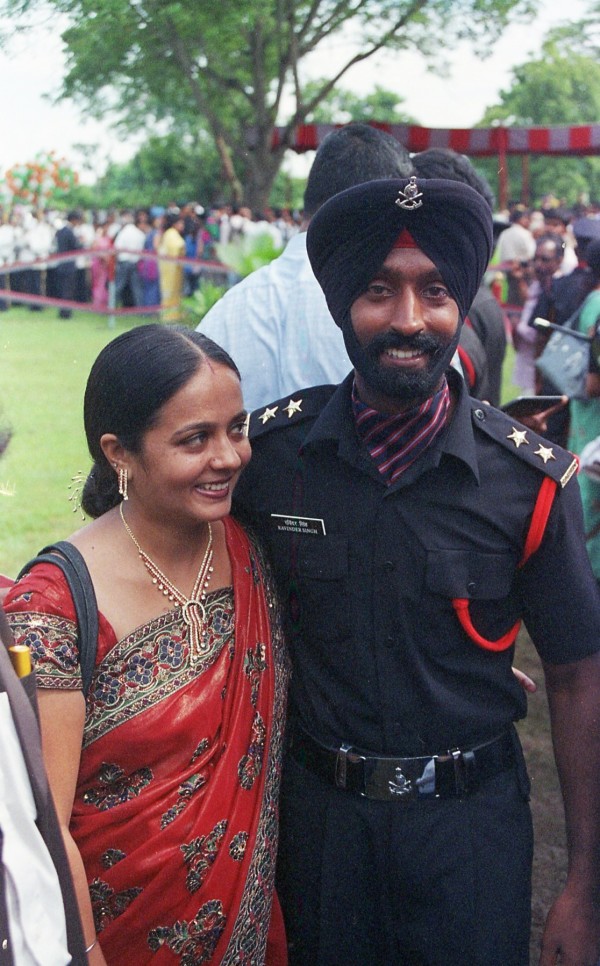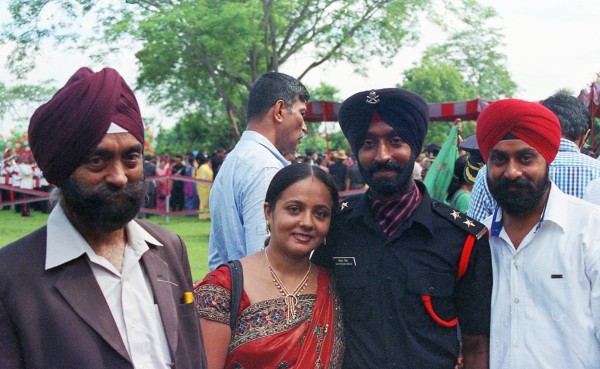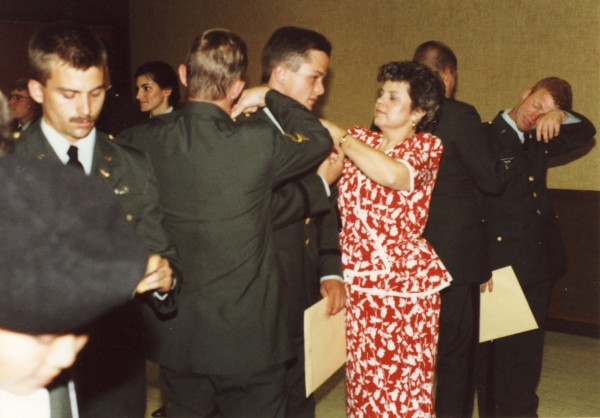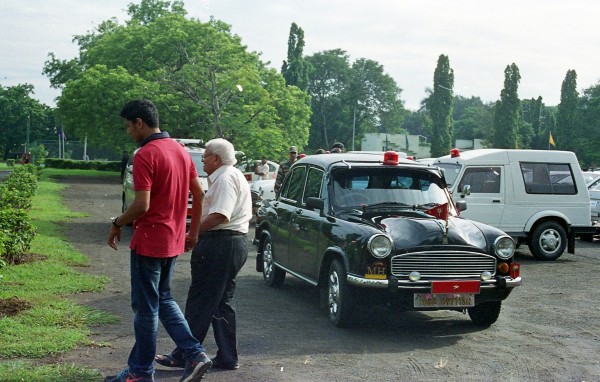I had the honor and pleasure of attending the Passing Out Parade at Chennai’s Officers’ Training Academy (OTA). To “pass out” of a military academy means, in a number of countries, to graduate, or move on. In the case of this particular passing out parade, 350 graduates went from being cadets, to being junior officers in the Indian Army. Sixty-nine of the graduates were women. Twenty of the graduates were cadets/officers of the Afghan National Army. In the photo below, the cadets march past the stand where the parents and relatives sit to watch, on their way to march past the ceremony’s reviewing officer – a Lieutenant General (if I remember correctly). The OTA has graduated 25,900 officers since 1963, including 2,500 women. It is located very close to St. Thomas’ Mount, the site where the disciple St. Thomas is thought to have been martyred in 72 AD.
For me, it was an emotional ceremony that reminded me of my own commissioning, years ago, in 1989. Memories started with the parents all standing and leaning to get a good photo. The cadets marched proudly, and in perfect step. The academy’s adjutant, below, is responsible for ensuring drill is performed correctly.
The remarkable ceremony in many ways resembled ceremonies for similar occasions in the U.S. Army. I suppose they are all alike in many ways – there is a shared military culture that transcends all national boundaries. And after all, both India and the United States were British colonies!
The presiding officers came to the ceremony in splendid horse-drawn carriages, with horse riders to the front and rear. For the inspection of troops, this modified pick-up truck, with every millimeter polished to a high shine, was slowly driven around the parade field.
At the completion of this part of the ceremony, the cadets all combined to form one large formation, and then marched slowly, to the tune of “Auld Lang Syne” in a column six across. As they reached the presiding officer’s stage, they split into two columns of three, passing to either side and to the rear, where they marched under an archway marked “Serve With Honour” and engraved with the names of those fallen in combat. As they marched, an extract of Rudyard Kipling’s poem, “If” was read, and the final thought the cadets were left with was, “Make history if you can, make a difference, which you can.”
Infantries the world over have much in common. This statue and its motto, “Follow Me”, greatly resemble the U.S. Infantry’s statue which currently stands in front of the Infantry School in Fort Benning, Georgia. The U.S. infantry’s motto is also “follow me.”
After a short tea break to give the new officers time to change into their uniforms, we were invited to the “pipping ceremony.” “Pips” are the rank insignia on the shoulder. In the United States military – for ROTC graduates, anyway, parents or close friends/designees are invited to pin the new officer rank on the recently graduated cadets. In the Indian Army, the rank is worn, but covered up by a small sleeve on the epaulet. In any military, it’s a proud moment as parents who have raised their children the best they could, and watched them overcome the many hurdles which brought them to this point, now get to participate in this important part of the ceremony.
Very nice guy, with proud parents and brother. We chatted for a bit – he will become an ordnance officer, but first everyone serves with the infantry for a couple of years, before branch-specific training. This is part of an “everyone an infantryman first” ethos we were recently working to recapture in the U.S. Army. Below, a photo of my own “pipping ceremony” for comparison.
After the pipping ceremony, the new officers were once again assembled in the central area to take the oath of office – once again, very similar to the American oath. One difference was that they included four clerics in the ceremony, one from each of India’s major religions – Hindu, Christian, Sikh and Muslim, at the front. Once this was complete, hundreds of balloons were released, along with confetti fired into the air. Previously the tradition had been to throw their service caps into the air, but this had recently been discontinued.
I also had a brief opportunity to chat with some of the Afghan graduates, where the atmosphere was a little different – these graduates were heading back to their own country to serve in combat.
I very much appreciated the opportunity to witness this important event and wish the young officers all the best in their new careers.
And to close things out, a photo of the ubiquitous Hindustani Ambassador – the vehicle of choice for government officials.
My photos are a bit grainy – they were taken on older film and processed at home. Plus I didn’t have as good a vantage point as the professionals. Some really great photos are provided by photojournalists at the New Indian Express – check them out by clicking on this link!

